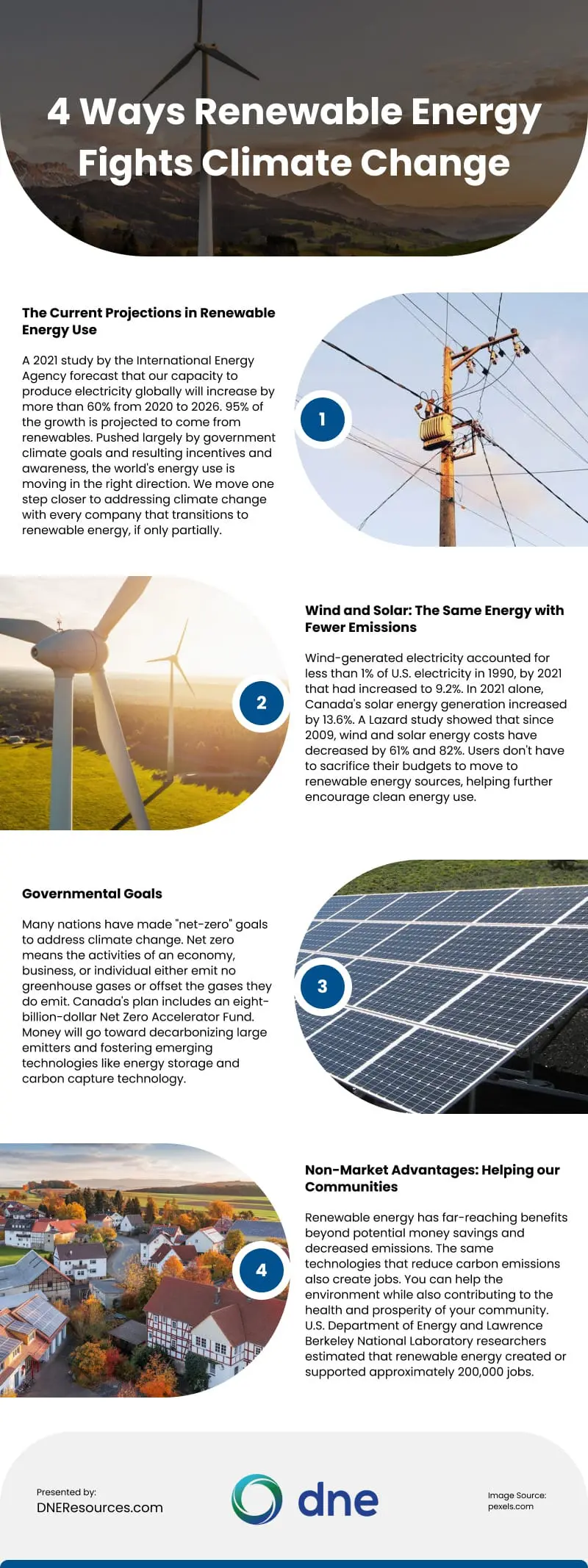
The increasingly evident consequences of climate change, including droughts, rising sea levels, wildfires, and severe storms, are detrimentally affecting humanity, and the situation is projected to worsen. However, there is hope as we have the opportunity to mitigate and potentially reverse climate change by embracing renewable energy as a vital solution.
Projections show a positive increase in the use of renewable energy, highlighting the effectiveness of solar and wind energy in lowering emissions. Governmental goals and programs are essential for promoting the use of renewable energy sources. Beyond the benefits to the environment, using renewable energy also has non-economic rewards that enhance the prosperity and well-being of our communities.
The current projections for renewable energy use
The International Energy Agency (IEA) predicts a 60% increase in global power generation capacity between 2020 and 2026, with renewable energy sources accounting for 95% of this growth. Solar photovoltaics and offshore wind capacity are expected to double by 2026. Energy usage is driven by climate targets, incentives, and increased awareness.
Wind and solar: the same energy with fewer emissions
The cost, efficiency, and uptake of wind and solar energy have significantly increased in the twenty-first century. Due to rising consumption in the US and Canada, they are now more competitive with fossil fuels. Consultancy services for renewable energy might lessen environmental impact.
Governmental goal
Many countries, including Canada and the G7 nations, have committed to reaching “net zero” by 2050 to address climate change. This means reducing greenhouse gas emissions and offsetting any remaining emissions through activities like planting trees or capturing carbon. Canada has established the Net Zero Accelerator Fund, investing eight billion dollars to decarbonize industries and promote emerging technologies like energy storage and carbon capture. This scale of investment is crucial for driving the necessary changes to combat climate change. Government support for renewable energy and emissions reduction incentivizes technological advancements and encourages users to prioritize clean energy option
Non-market advantages: helping our communities
Choosing renewable energy not only benefits the environment but also supports your community’s health and prosperity. Renewable energy technologies not only reduce emissions but also create jobs. Studies have estimated that renewable energy has created or supported around 200,000 jobs, leading to improved air quality and global health benefits valued at $5.2 billion. By investing in renewable energy, we not only create employment opportunities but also save lives and healthcare costs. These additional benefits of green energy further motivate its use, increasing adoption rates and helping to mitigate climate change.
Sustainability is becoming more prominent in conversations about energy and climate change. Notably, due to the rising availability and affordability of renewable energy, we are seeing considerable gains in its adoption. Maintaining this upward trend is crucial, especially for big countries aiming to reach their net-zero goals by 2050. Governments, corporations, and individuals must continue to prioritize renewable energy if they are to successfully counteract and ultimately reverse the consequences of climate change. We can successfully prevent the worsening effects of climate change by working together.
source: https://dneresources.com/renewable-energys-role-in-fighting-climate-change/
Comments
Download this infographic.
